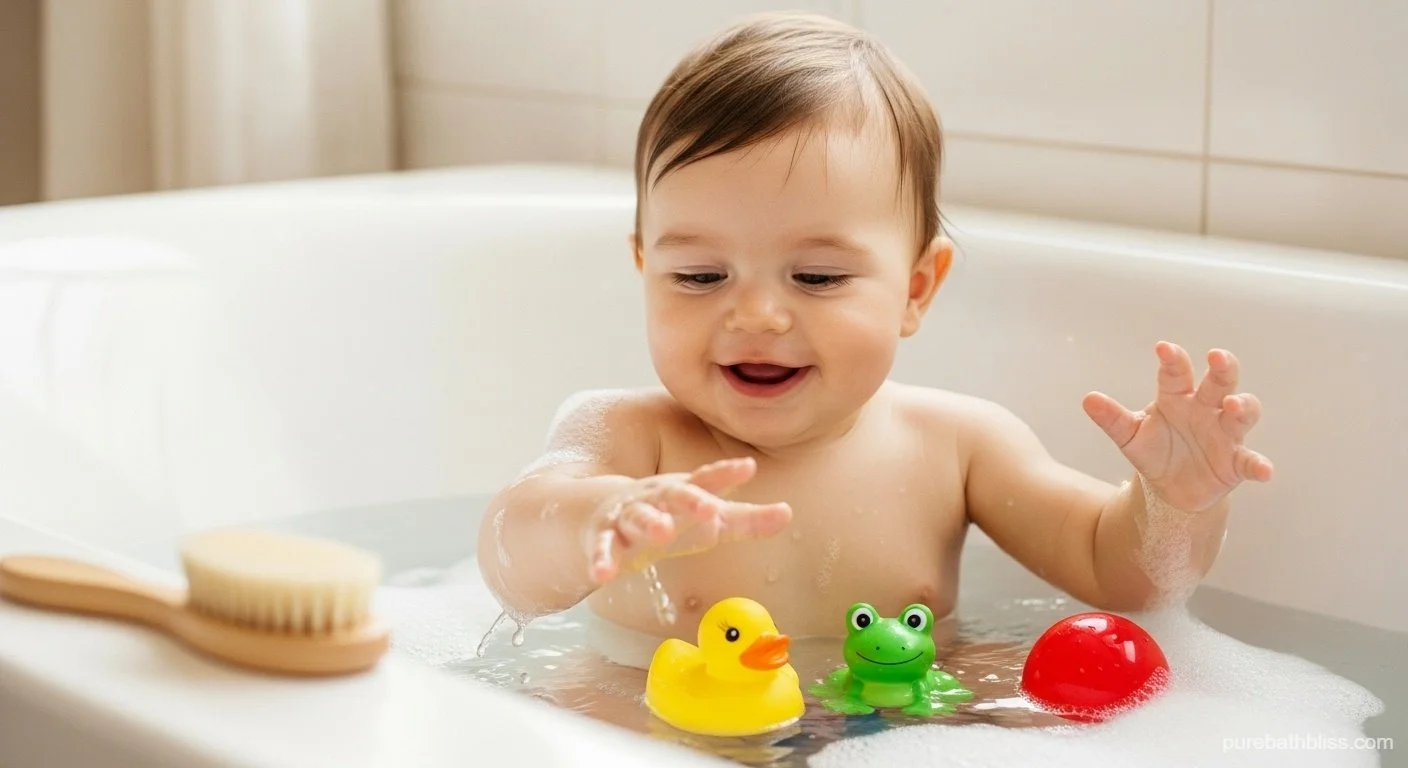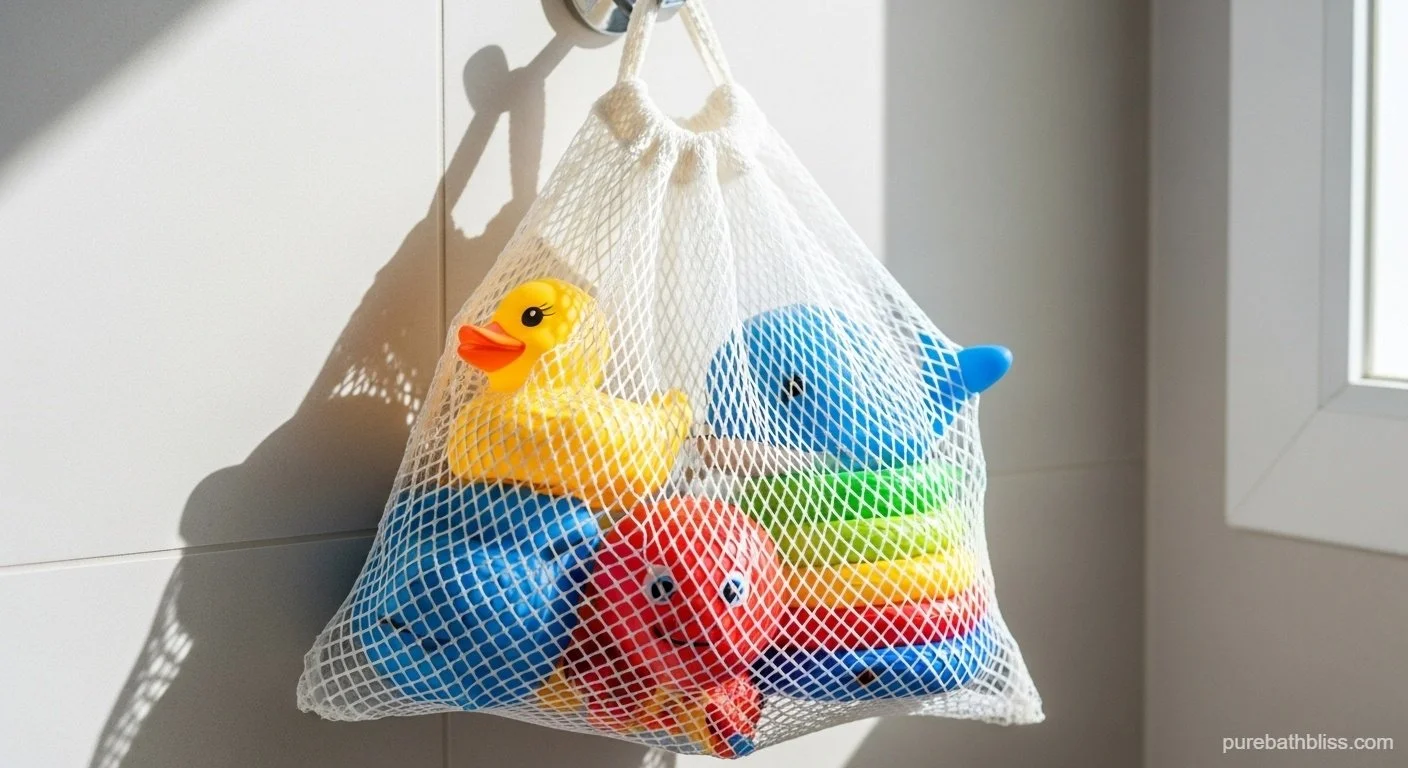How to Choose Baby-Safe Bath Toys: The Ultimate Guide for Toxin-Free Tub Time
Bath time with your little one should be the highlight of the day—all fun, splashing, and genuine giggles. But for every parent committed to hygiene and sustainability, those moments are often accompanied by a quiet question: Are these toys truly safe? Especially here in the mid-2020s, as parents prioritize eco-friendly and hygienic choices, picking the right bath toys isn't just about fun; it’s about making sure you’re creating a worry-free, healthy environment.
Whether you’re gently splashing around with a curious newborn or navigating the enthusiastic waves of a busy toddler, this guide is your go-to resource. We'll walk you through how to choose baby-safe bath toys, highlighting the materials to embrace and the hidden hygiene hazards to avoid. By making smart, informed choices, you ensure a truly joyful experience while perfectly aligning with PureBathBliss.com’s mission for a sustainable, impeccably clean, and conscious bathroom.
Why Baby-Safe Bath Toys Matter: The Hidden Hazards
For babies and toddlers, the bath is a sensory playground, and their primary method of exploration is often their mouth. This simple fact elevates bath toy safety from a minor detail to a top concern. Unsafe, conventional toys can pose several risks that undermine your efforts to maintain an organic, healthy home.
1. Chemical Exposure and Material Leaching
Many mass-produced plastic toys, particularly older ones or those without strict certification, can contain problematic chemicals:
Phthalates and PVC: These plasticizers are used to make toys soft and flexible, but they can leach into the warm bathwater. Phthalates, in particular, are known endocrine disruptors, causing serious concern when placed in a baby's mouth or left to sit in warm water for prolonged periods.
Colorants: Brightly colored, non-organic plastic dyes can contain heavy metals or other toxins that shouldn't be in contact with a baby's developing body.
2. The Mold Factor: A Hygiene Nightmare
As noted in our article, “Mold-Free Shower,” mold growth thrives in the warm, damp environment of the bathroom. Poorly designed bath toys—particularly cheap squirty toys with small, hidden holes—are notorious for trapping water.
Internal Growth: This trapped water becomes a dark, stagnant reservoir for bacteria and black mold. When the baby inevitably squeezes the toy, that water (and the mold spores) are sprayed directly into the bath or, worse, into the baby's mouth. This can lead to digestive issues or respiratory problems.
Addressing Odor: This also directly relates to the insights from our article “Why Does My Bathroom Smell?”—mold and mildew from neglected toys are common sources of that unpleasant, persistent musty odor.
3. Choking and Physical Hazards
While less about chemicals, physical safety is paramount. Toys with small, breakable parts or components that can easily snap off pose a significant choking hazard, a standard risk every parent must diligently manage.
Choosing the right toys protects your baby’s health, reduces the toxic load in your home, and supports an eco-conscious lifestyle by prioritizing durable, natural materials.
Key Features to Look For: The Safety Checklist
When shopping for bath toys, move past the eye-catching colors and focus on these essential qualities. These criteria are non-negotiable for a truly baby-safe and sustainable bath routine.
1. Non-Toxic Materials: Back to Nature
In an organic home, the material is everything. Look for toys made from natural, inert, and truly baby-safe materials:
Natural Rubber: Sourced from the rubber tree, this is highly durable, flexible, and completely biodegradable. Ensure the dye is food-grade.
Silicone: A synthetic material, but one that is generally considered safe and highly stable, resisting heat and bacteria without leaching harmful chemicals like BPA or PVC. Silicone is non-porous and easy to clean.
Untreated Wood: Opt for smooth, sturdy woods that have not been chemically treated or sealed with synthetic varnish. Wood is naturally antimicrobial, but must be dried thoroughly.
Materials to Avoid: Steer clear of traditional PVC (often contains phthalates), cheap plastic #3 (often contains plasticizers), and any toy that feels greasy or has a strong chemical smell upon purchase (a sign of cheap fillers or fragrances). This aligns with the caution urged in “Eco-Friendly Bathroom Accessories.”
2. Size and Part Integrity
The most immediate physical danger comes from small parts.
The Choking Test: A universal safety standard from the Consumer Product Safety Commission (CPSC) suggests that pieces too small to fit through a toilet paper roll (about $1.75$ inches in diameter) are too small for a baby. Ensure all toy components, even if broken off, are larger than this diameter.
Durability: Test for durability. Squeeze, pull, and tug toys to ensure they won’t break apart easily at the seams, preventing hazards during vigorous toddler play.
3. Easy to Clean and Mold-Resistant
This is the single most important factor for hygiene, directly addressing issues noted in “DIY Natural Cleaning Solutions” regarding cleaning effectiveness.
No Crevices: Choose toys with simple, seamless designs. Fewer crevices mean fewer places for soap scum and bacteria to hide.
Open Drainage vs. Sealed: Select toys that are either fully sealed (no hole, no way for water to get in) or completely open (allows water to drain out and allows for easy cleaning access). Avoid squirty toys with tiny, hard-to-clean holes.
Dishwasher Safe: The easiest way to sanitize is by running a toy through a dishwasher cycle once a week. Prioritize silicone or rigid plastic toys labeled dishwasher-safe.
4. Eco-Friendly Certifications
Choosing safe materials is a reflection of your eco-friendly values. Go for sustainable options like organic rubber or recycled materials to reduce environmental impact, aligning perfectly with the concepts in “Bamboo Bathroom Benefits.” Look for “non-toxic” or “BPA-free” labels and certifications like ASTM F963, which ensures safety standards are met.
Top Tips for Selecting the Perfect Toys
Once you’ve confirmed the materials are safe, use these practical tips to select toys that will enhance your baby’s development and bath time joy.
1. Match Age and Development
Choose age-appropriate toys to maximize skill-building, mirroring the care required in “Tear-Free Soaps 2025.”
Infants (0-6 months): Focus on soft, large floaters, simple rings, and textured toys that are easy to grab and safe for chewing. High contrast colors are excellent for visual stimulation.
Older Babies (6-12 months): Introduce stackable cups, small floating animals, and toys that encourage transferring water from one container to another.
Toddlers (12+ months): Time for more complex play! Look for small boats, simple pouring tools, and items that stick to the tub wall (ensuring the suction cups are durable and well-sized).
2. Avoid Electrical and Liquid-Filled Toys
Battery-Operated Toys: These can leak chemicals or potentially pose electrical risks in water. While rare, the battery and motor compartments are complex and impossible to dry fully, guaranteeing mold growth. Stick to simple floaters or classic squirters that are easy to disassemble.
Liquid/Glitter Fillings: Avoid toys with internal liquids, glitter, or lights that are not completely sealed. If these toys break, the contents can be harmful.
3. Check Labels and Certifications
The care you put into selecting organic soap (as discussed in “Organic Soap Benefits”) should extend to the toys you buy. Look for external verification:
ASTM F963: The primary U.S. consumer safety standard for toys.
CE Mark: Indicates compliance with European health, safety, and environmental protection standards.
Buy from Reputable Brands: Stick to trusted names known for safety and sustainability, rather than unverified sellers or generic foreign imports that may cut corners on materials.
How to Maintain Baby-Safe Bath Toys
The safest toy can become a hygiene hazard if not maintained properly. Proactive cleaning prevents the mold growth that leads to that musty smell, a tip essential to “Mold Prevention.”
1. The Regular Cleaning Protocol
Daily Rinse: After each use, rinse all toys thoroughly to remove soap scum, body oil, and residue from the “Are Bars of Soap Safe for Babies?” product you used.
Weekly Wash: Wash all toys with mild, unscented soap and water weekly. Alternatively, use a natural, diluted vinegar solution (1 part white vinegar to 4 parts water) to soak toys for 15 minutes to kill bacteria and prevent mold, per the principles in “Non-Toxic Drain Unclogging.”
Deep Clean: If a toy is dishwasher-safe (like many silicone options), run it through a sanitizing cycle every $2-3$ weeks.
2. Thorough Drying and Storage
Shake and Drain: After cleaning, shake out all water vigorously—especially from toys with holes—and allow them to air-dry completely. Never store wet toys.
Ventilated Storage: Store toys in a ventilated mesh bag or a basket with drainage holes, placed outside the humid tub area. The goal is maximum airflow, as suggested by principles in “Small Bathroom Organization.”
3. Inspect and Replace
Inspect Often: Check for wear, cracks, or discoloration monthly. Cracks can harbor deep mold growth that can’t be cleaned, and damaged plastic can expose sharp edges or interior components.
Replace Damaged Toys: Swap out toys immediately if they show signs of damage or irreparable discoloration, similar to maintaining hygiene in “Grout Maintenance.” While the exact timeframe varies, expect to replace high-use toys every $6-12$ months to maintain hygiene standards.
Common Mistakes to Avoid: Keeping Bath Time Blissful
Steer clear of these pitfalls to keep your baby safe and your bathroom truly clean:
Ignoring Drainage Holes: This is the primary hygiene error. Toys without proper drainage, or toys that are impossible to squeeze dry, will become mold factories. If you can’t clean it, don’t buy it.
Overloading with Toys: Too many toys can clutter the tub, creating unnecessary mess and potentially increasing the risk of the baby slipping or hitting a hard surface. Keep it simple and rotate toys weekly.
Using Hand-Me-Downs Without Checking: Old toys may harbor deep mold, and the materials might predate modern safety standards (like the banning of certain phthalates). Always assume an older plastic toy has compromised materials or is internally dirty.
Real-World Examples: Trusted, Sustainable Picks
These toys are favorites among eco-conscious parents for their safety and sustainability:
Green Toys Submarine: Made from $100\%$ recycled plastic milk jugs, dishwasher-safe, and free of BPA. A champion for eco-conscious parents.
Munchkin Float and Play Bubbles: Soft, mold-resistant, and easy to clean, often featuring soft, gentle materials ideal for infants.
Hevea Rubber Ducks/Animals: Made from $100\%$ natural rubber, completely sealed (no hole!), and painted with natural plant pigments. Perfect for chewers and mold-free hygiene.
PlanToys Floating Boat: Organic rubberwood, non-toxic, and durable, perfect for sustainable, water-safe play.
Integrating with Your Bathroom Routine
Pair these thoughtfully chosen toys with your baby-safe bath setup—using mild, pH-balanced soaps from our other guides and storing toys in a ventilated basket—to maintain the eco-friendly vibe of your edited soap pyramid image (4 rows high, organic bathroom setting). This keeps your bathroom a sanctuary for both you and your little one.
Why It’s Worth the Effort: More Than Just Cleanliness
Choosing baby-safe bath toys isn’t just about eliminating risks; it’s about actively creating a positive, enriching, and joyful experience.
Peace of Mind: Knowing your baby is playing with non-toxic, clean toys allows you to truly relax and be present during bath time.
Developmental Benefits: Thoughtfully selected toys can stimulate sensory development, encourage fine motor skills, and spark imaginative play.
Environmental Impact: By choosing durable, sustainable materials, you’re teaching valuable lessons about caring for our planet, reducing plastic waste, and making conscious consumer choices.
With the right picks and a simple maintenance routine, you’ll enjoy splash time without worry, supporting PureBathBliss.com’s vision for a hygienic, sustainable bathroom. Start shopping today and watch your baby’s smile grow—a testament to your dedication to their health and happiness!



